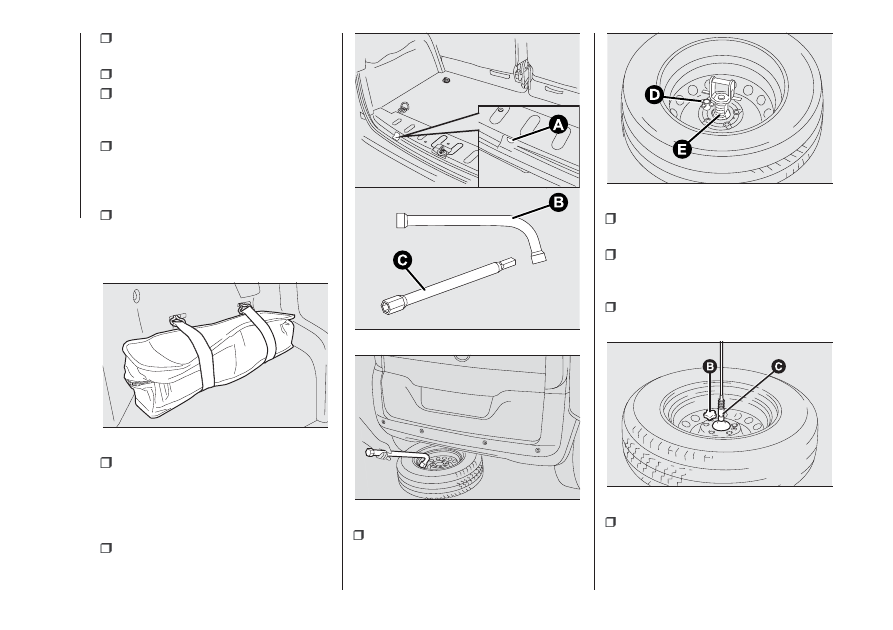Fiat Qubo (2018 year). Manual - part 7

switch off the engine and pull the
handbrake;
engage first gear or reverse;
wear the reflective safety jacket
(compulsory by law in certain countries)
before getting out of the vehicle;
indicate that the vehicle has broken
down using the devices required by
the law in the current country (e.g.
warning triangle, hazard lights, etc.);
open the tailgate, take the tool bag
fig. 111 located on the left of the boot
by releasing the elastic straps and take
to the wheel to be replaced;
take wheel spanner B fig. 112 and
the extension with pentagonal fitting C;
inside the load area, fit extension C
on bolt A; use spanner B to lower the
wheel by unwinding the wire;
use the spanner B to remove the
wheel from the vehicle fig. 113;
unscrew knob D fig. 114 and release
the rim from bracket E, removing it
from the hole of the rim;
for vehicles with alloy rims, remove
the hub cap;
loosen the fixing bolts of the wheel
to be replaced by about one turn, using
the spanner provided;
for wheels with steel rims, remove
the wheel cap;
turn the jack to open it partially and
then position it under the vehicle at
the references A fig. 116 near the wheel
to be replaced;
111
F0T0206
112
F0T0922
113
F0T0419
114
F0T0923
115
F0T0169
104
IN
AN
EMERGENCY